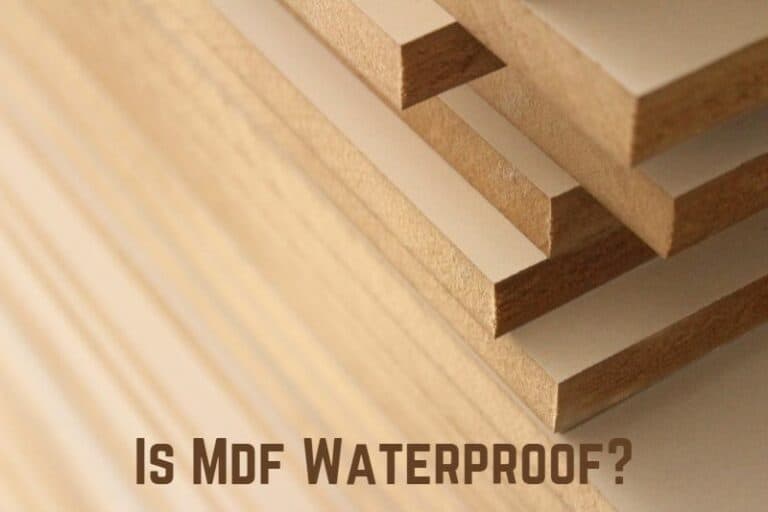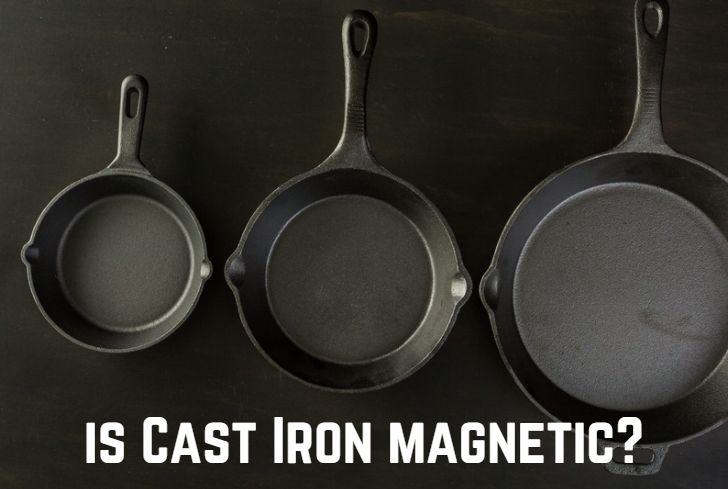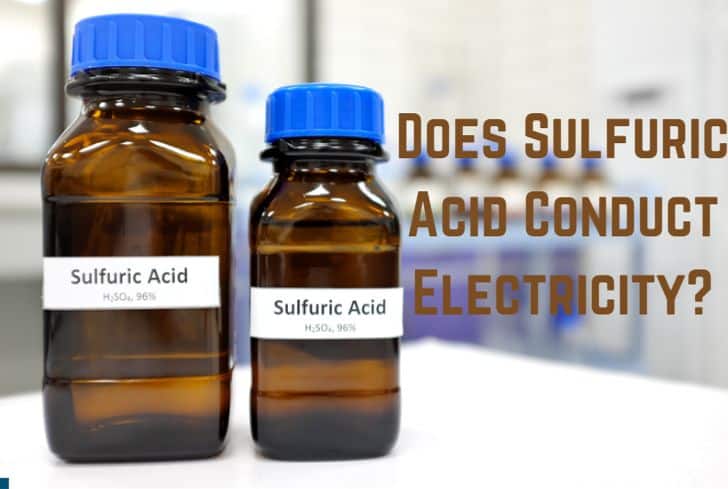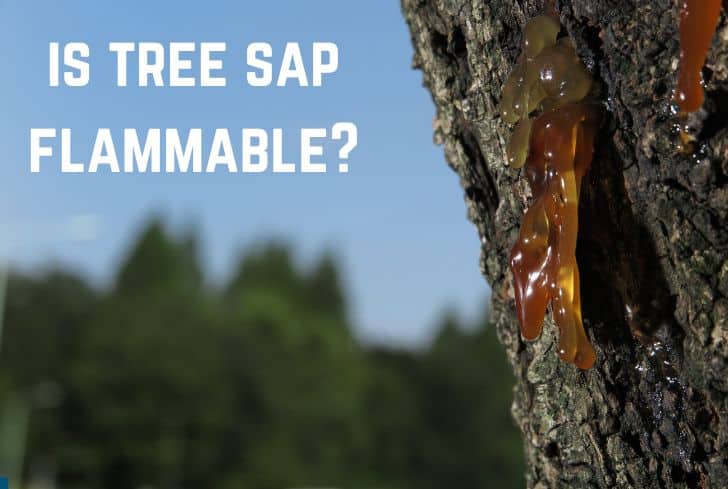Does Granite Conduct Electricity? (No. It Doesn’t)
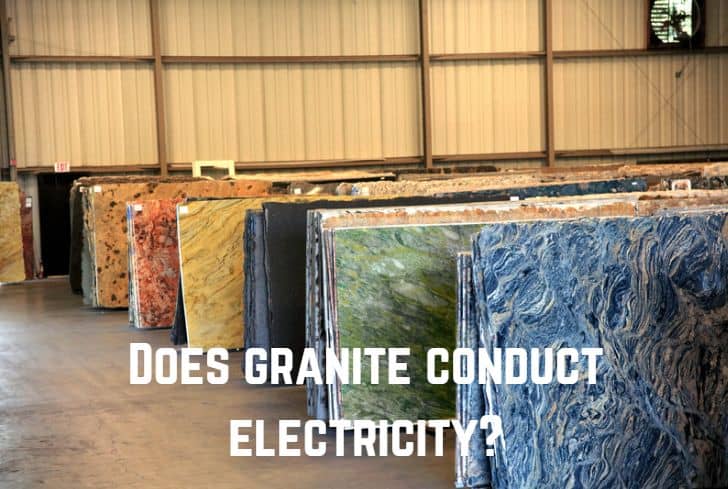
Granite is a coarse igneous rock composed of quartz, alkali feldspar, and plagioclase. It has grains large enough to be seen by the naked eye and is formed by the crystallization of magma below the Earth’s surface.
Granite is the most common igneous rock found on Earth’s surface. Have you ever wondered if granite conducts electricity? In this article, we are going to discuss just that. We will look at the properties and uses of granite. Then we will talk about its electrical & thermal conductivity.
Read: Does Wood Conduct Electricity?
Is Granite Conductive?
No, granite does not conduct electricity. It is an igneous rock made up of quartz, alkali feldspar, and plagioclase, all of which are non-conductors. The chief component is quartz, made up of silicon dioxide, just like glass—both of these are insulators.
Granite is an igneous rock that is formed when magma or lava slowly cools down and solidifies under the Earth. It is a hard & durable rock, which is widely used in building and construction applications, such as monuments, countertops, flooring, etc.
Despite its wide variety of uses, granite is not appropriate for electrical applications. It is made up of quartz, feldspar, and plagioclase, all of which are non-conductors. They do not have free electrons that can move across the material and carry the electric charge; therefore, they cannot conduct electricity.
On the other hand, metals like copper and aluminum are good conductors of electricity because they have free electrons that can move around and carry the electric current. Therefore, these are ideal for electrical applications.
While some minerals like graphite can conduct electricity, these are not found in significant quantities in granite. Rocks that contain metallic minerals or have been under high pressure/temperature may also show conductive properties, but again, granite is usually not among these rocks.
So, granite is a non-conductor.
How Does Granite Conduct Electricity?
Granite does not conduct electricity because it does not have free electrons that can carry the electric charge from one point to another. It is made up of minerals like quartz, feldspar, and plagioclase, all of which are non-conductors. Therefore, granite is also a non-conductor.
For a material to conduct electricity, it must have free electrons that can move the electric charge from one place to the other. Metal ions form a giant structure known as the “sea of delocalized electrons”, which can move freely.
These free-moving electrons can transport the electric charge from one point to another, which is why metals are conductive in both solid and liquid states. On the other hand, most non-metals (like glass) do not have free electrons and therefore do not conduct electricity.
Glass is made up of silicon dioxide, which is also a major constituent of granite. Silicon dioxide does not have free electrons that can move freely across the material and carry the electric current. The other components of granite (feldspar, plagioclase) are also non-conductors.
Therefore, granite also does not conduct electricity. Granite’s non-conductivity is quite useful. It acts as an insulating material in transformers, switchgear, and other electrical equipment, helping electrical current from escaping.
Granite’s non-conductivity is also significant in radioactive shielding, thermal insulation, and durability.
Does Granite Conduct Heat?
No, granite is a poor conductor of heat. This is because it has low porosity and high density. It does not exactly transfer heat and acts as a heat insulator. Therefore, granite is also used in thermal insulation applications.
The specific heat capacity (the amount of heat required to raise the temperature by one unit) is 0.79 joules per gram per degree Celsius (J/g°C). So, a relatively high amount of energy is required to raise its temperature.
This property is not a bad thing, as it makes granite ideal for applications that require thermal stability. For example, countertops, building facades, flooring, etc.
However, while granite is a poor conductor of heat, it still has some level of thermal conductivity. When exposed to heat for too long, it can become hot.
Does Granite Attract Lightning?
No, granite does not attract lightning. Metals are much more likely to attract lightning due to their high electrical conductivity. However, lighting can occur on any object that reaches into the atmosphere, irrespective of its composition.
Lighting occurs when a large static electricity buildup in the atmosphere gets discharged between two oppositely charged regions. Metals are more likely to attract lightning because of their high conductivity, which is why tall lightning rods are made to protect nearby regions.
Granite is not conductive, so it is less likely to attract lightning. However, all objects tall enough to reach the atmosphere can get struck by lightning, irrespective of their composition. Therefore, buildings made up of granite or even mountains can get struck by lightning.
Does Granite Absorb Stains?
Yes, granite can absorb stains. It is a naturally porous material, and if it is not sealed properly, it can be susceptible to staining. However, with proper sealing, it can resist staining and discoloration.
Granite’s porosity depends on its composition, but it is generally a moderately porous material. This means that it has tiny pores that can absorb liquids. Liquids such as coffee or oil can seep into these holes, causing staining and discoloration.
With proper sealing, the pores of granite can be filled. This will disallow liquids from entering the pores, reducing the chances of staining and discoloration. But even this is not a foolproof method. Therefore, it is best to be careful and clean spills quickly over granite surfaces.
Properties of Granite
These are the properties of granite:
- Occurrence: Granite occurs in various tectonic environments, such as mountain ranges, continental shields, and oceanic islands. It is formed when magma containing silica and alkali metal oxides slowly cools and solidifies under Earth’s surface. This magma rises back to the surface through volcanic eruptions or intrusions in existing rock formations. Granite is found in various countries like the United States, South Africa, India, etc.
- Composition: Granitic rocks are made up of feldspar (30-50%), quartz (25-40%) , mica, and amphibole minerals. The rocks consist of an interlocking, equigranular matrix of quartz and feldspar, with a scattered peppering of mica and amphibole. Sometimes, individual crystals of the rock are larger than the groundmass; in such cases, the texture is known as porphyritic.
- Appearance: Granite is a light-colored stone with a speckled appearance due to a mix of different minerals. The specific color of the stone depends on its composition and location of formation: the presence of iron-rich minerals can give it a red or pink hue, while mica minerals give it blue, green, and yellow flecks. The natural patterns on graphite give every specimen a unique look and it is known for its beauty.
- Hardness & Durability: Granite is one of the hardest natural stones (6-7 on the Mohs Scale). Its durability and resistance make it perfect for use in high-traffic areas and outdoor settings. Moreover, granite also has high density and low porosity, which makes it resistant to moisture, bacterial growth, and staining. Therefore, granite is a long-lasting material whose beauty and functionality remain untarnished.
- Heat Resistance: Graphite is made up of quartz and feldspar, which have a high melting point and low thermal expansion rate. It has a melting point of 1215–1260 °C (2219–2300 °F) at ambient temperature. So, graphite can withstand high temperatures without getting damaged or discolored. This is why it is perfect for making kitchen countertops, fireplaces, or any other appliances that are exposed to heat.
Uses of Granite
These are the uses of granite:
- Historical Uses (Buildings): Pyramids in Egypt were made out of limestone and granite blocks. Granite was also used to make door lintels, columns, floor veneer, etc. Seokguram Grotto, a Buddhist shrine in Korea, and the Brihadeeswarar Temple in India are both made entirely out of granite. Granite was also an integral part of Roman architecture.
- Dimension Stone: Granite most often serves as a dimension stone: a natural rock that is cut into slabs of specific lengths, thicknesses, etc. It is an excellent dimension stone because it is highly durable, resistant to weathering, strong enough to bear significant weight, and takes a brilliant polish. Check out this video by KB Countertops to learn about the different kinds of granite countertops.
- Pavement & Curling Stones: As granite is highly durable, permeable, and requires low maintenance, it is widely used as a pavement material. Curling stones are also made up of granite. Since the 1750s, Ailsa Craig in Scotland has been a major source of granite used for this purpose. About 60-70% of the curling stones are made of Ailsa Craig granite.
- Memorials & Sculptures: Because of its natural beauty and durability, granite is widely used to make monuments, headstones, and memorials. Granite is a hard stone, and until the 18th century, since there were only hand tools, it never created good results. However, the invention of steam-powered cutting gave sculptors much greater control. The famous Mount Rushmore sculptures in the US are also made of granite.
- Other Uses: Granite is used in landscaping projects, such as outdoor accents, rock gardens, walls, etc. It is also used for flooring in entryways, bathrooms, and kitchens. Engineers have traditionally used granite surface planes to establish a plane of reference. Finally, granite is also a stone loved by mountain climbers, who value it for its steepness, crack systems, and friction.
Read: Does Graphite Conduct Electricity?
Conclusion
In this article, we have looked at the electrical conductivity of granite. Since it is made up of non-conductive minerals—which do not have free electrons that can carry an electric charge—granite does not conduct electricity. We also looked at the properties and uses of granite.


